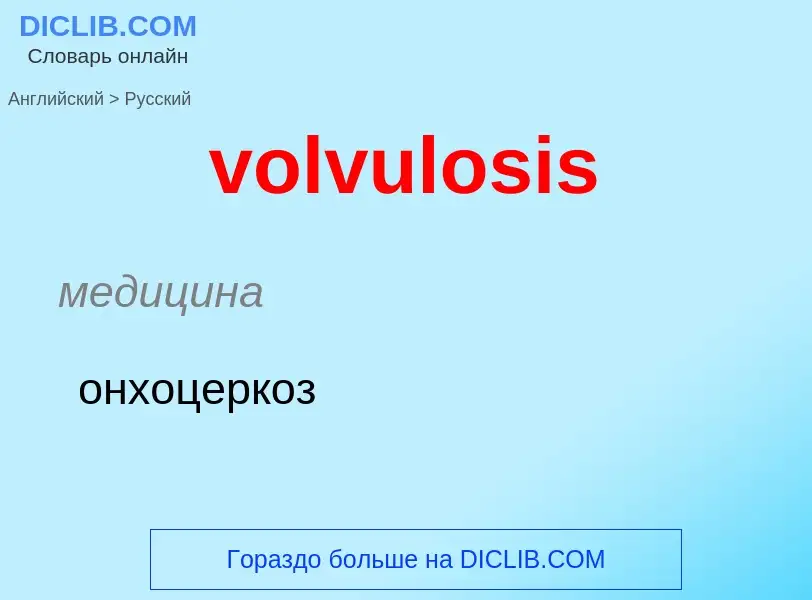Traducción y análisis de palabras por inteligencia artificial ChatGPT
En esta página puede obtener un análisis detallado de una palabra o frase, producido utilizando la mejor tecnología de inteligencia artificial hasta la fecha:
- cómo se usa la palabra
- frecuencia de uso
- se utiliza con más frecuencia en el habla oral o escrita
- opciones de traducción
- ejemplos de uso (varias frases con traducción)
- etimología
volvulosis - traducción al ruso
медицина
онхоцеркоз
[krɔ:'krɔ:]
существительное
общая лексика
злокачественная форма чесотки (в Западной Африке)
гельминтология
онхоцеркоз
Definición
Wikipedia

Onchocerciasis, also known as river blindness, is a disease caused by infection with the parasitic worm Onchocerca volvulus. Symptoms include severe itching, bumps under the skin, and blindness. It is the second-most common cause of blindness due to infection, after trachoma.
The parasitic worm is spread by the bites of a black fly of the Simulium type. Usually, many bites are required before infection occurs. These flies live near rivers, hence the common name of the disease. Once inside a person, the worms create larvae that make their way out to the skin, where they can infect the next black fly that bites the person. There are a number of ways to make the diagnosis, including: placing a biopsy of the skin in normal saline and watching for the larva to come out; looking in the eye for larvae; and looking within the bumps under the skin for adult worms.
A vaccine against the disease does not exist. Prevention is by avoiding being bitten by flies. This may include the use of insect repellent and proper clothing. Other efforts include those to decrease the fly population by spraying insecticides. Efforts to eradicate the disease by treating entire groups of people twice a year are ongoing in a number of areas of the world. Treatment of those infected is with the medication ivermectin every six to twelve months. This treatment kills the larvae but not the adult worms. The antibiotic doxycycline weakens the worms by killing an associated bacterium called Wolbachia, and is recommended by some as well. The lumps under the skin may also be removed by surgery.
About 15.5 million people are infected with river blindness. Approximately 0.8 million have some amount of loss of vision from the infection. Most infections occur in sub-Saharan Africa, although cases have also been reported in Yemen and isolated areas of Central and South America. In 1915, the physician Rodolfo Robles first linked the worm to eye disease. It is listed by the World Health Organization (WHO) as a neglected tropical disease. In 2013 Colombia became the first country to eradicate the disease.


.jpg?width=200)
![[[Patch test]] [[Patch test]]](https://commons.wikimedia.org/wiki/Special:FilePath/Epikutanni-test.jpg?width=200)
